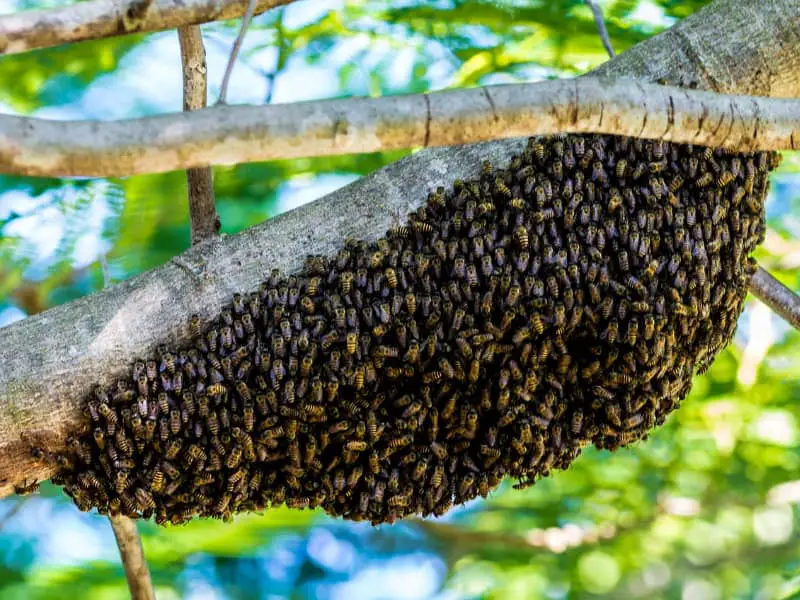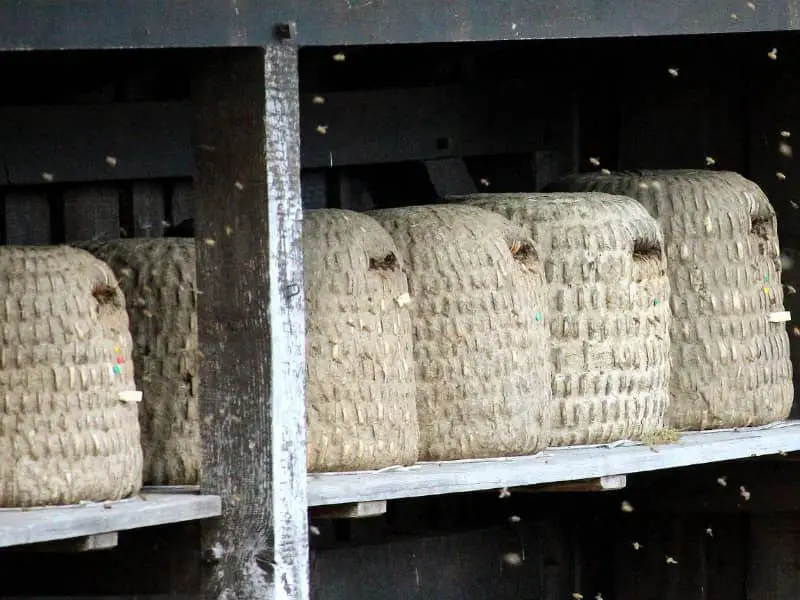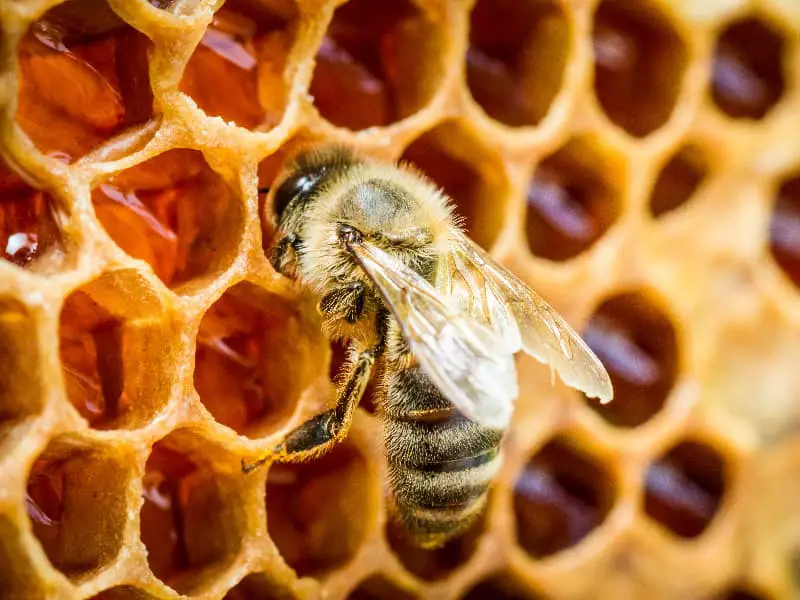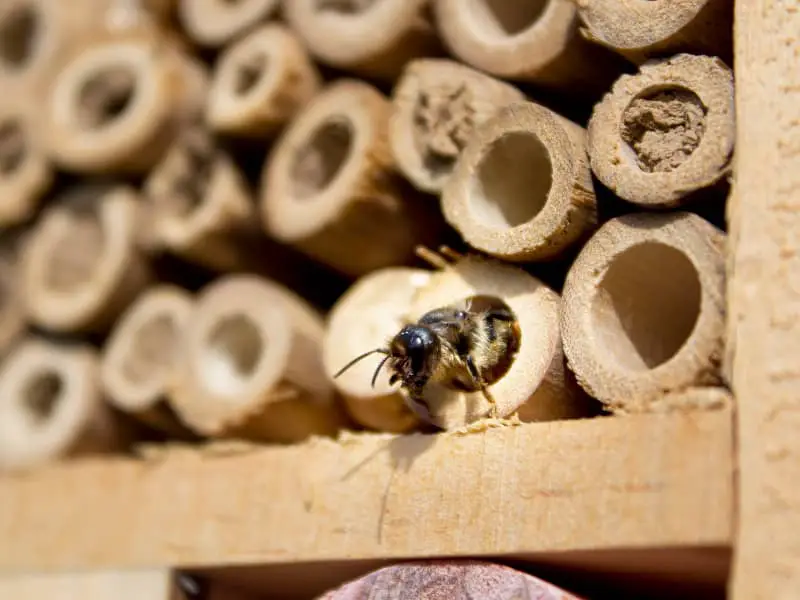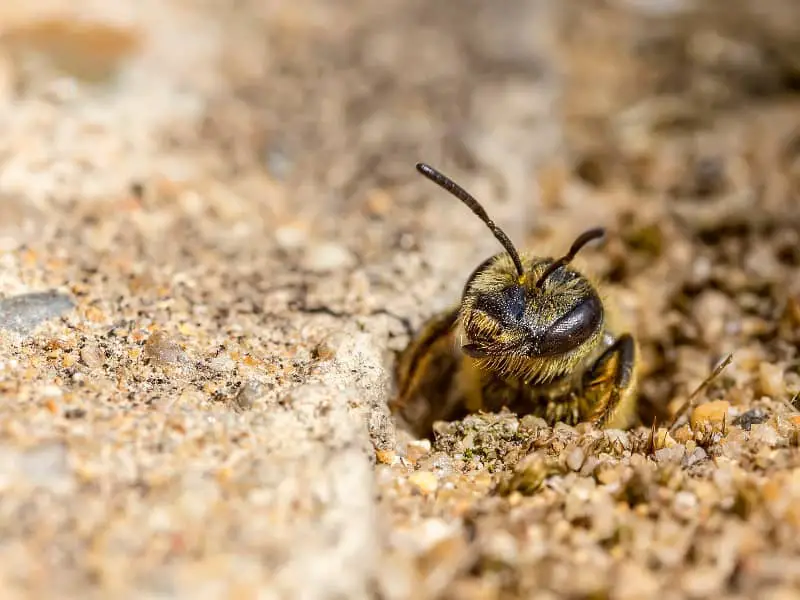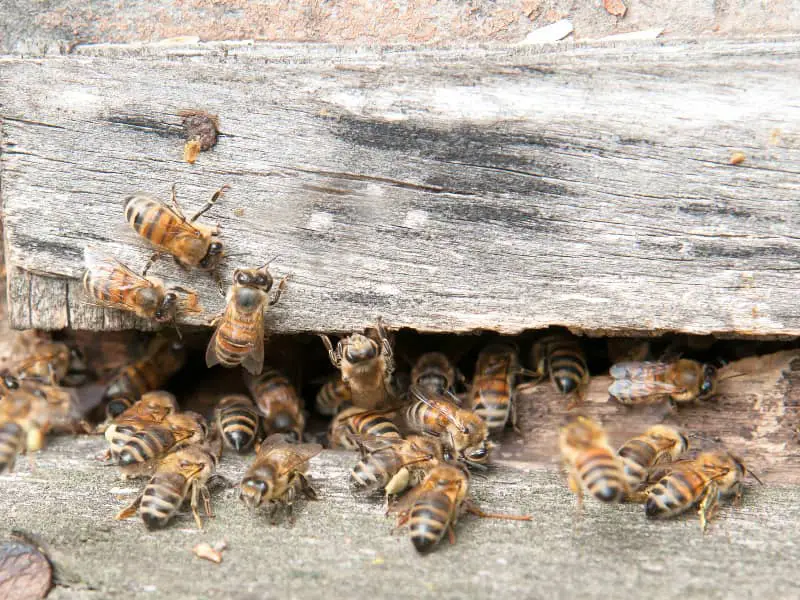
Bee nest in roof
The idea of having a bees' nest in the roof can be surprising and even disturbing for many. But a closer look reveals a wonderful, hidden world that fascinates and amazes us. Let's dive into this topic together and explore what it means when bees make a home in our roof beams.
- Bee nest in roof
- Why do bees build a nest in the roof?
- How to recognize a bee nest in the roof?
- Should you have a bee nest removed from the roof?
- How to keep bees from settling in the roof?
- What role does the season play in a bee nest in the roof?
- Can other animals be attracted to a bee nest in the roof?
- Are there differences between a bee nest and a wasp nest in the roof?
- Conclusion: bee nest in the roof
- Why do bees build a nest in the roof?
Why do bees build a nest in the roof?
To understand why bees build a nest in the roof in the first place, we must first understand how bees live and what they are looking for. Keep bees constantly on the lookout for a safe place to build their nest. This place should be protected from predators and weather conditions and at the same time provide access to food sources.
A roof provides exactly these conditions. It offers protection from rain and wind and is often located near gardens and other places where bees find food. The isolated and protected environment of the attic is therefore often a preferred choice for bee colonies looking for a new nesting site.
How to recognize a bee nest in the roof?
If you suspect that there is a bee nest in your roof, there are a few signs to look for. For one, you will likely notice increased bee activity near your home. This could be in the form of bees flying in and out of a certain area on a regular basis.
Another sign could be a buzzing sound coming from the attic area. While some bee species are very quiet, others produce a clearly audible buzzing sound, especially if they are present in large numbers.
A third sign of a bee nest in the roof is the presence of wax or honey. If you see droplets of honey on the ceiling or walls, or spot spots of wax, this could indicate that a bee nest is nearby.
Should you have a bee nest removed from the roof?
The presence of a bee nest in the roof brings both advantages and disadvantages. On the one hand, bees make an invaluable contribution to the pollination of plants and the production of honey. Their presence can therefore be considered positive.
On the other hand, bees can sting, mainly when they feel threatened. This can be dangerous especially for people with bee allergies. Likewise, if bees are present in large numbers, they can also cause structural damage to the roof.
The decision of whether or not to remove a bee nest ultimately depends on individual circumstances. If you decide to remove it, it is important to contact a professional who can remove the nest in a humane way without harming the bees.
How to keep bees from settling in the roof?
If you want to prevent bees from taking up residence in your roof, there are several preventative measures you can take. One effective method is to identify and seal potential entry points in your roof. This includes holes, cracks or other openings through which bees could enter.
Another method is to keep plants and flowers that particularly attract bees away from your home. Although this is not always practical, it can help reduce the likelihood that bees will take up residence nearby.
In addition, it can be helpful to conduct regular inspections of your attic to ensure that bees have not become established. Early detection and action can prevent a colony from becoming firmly established.
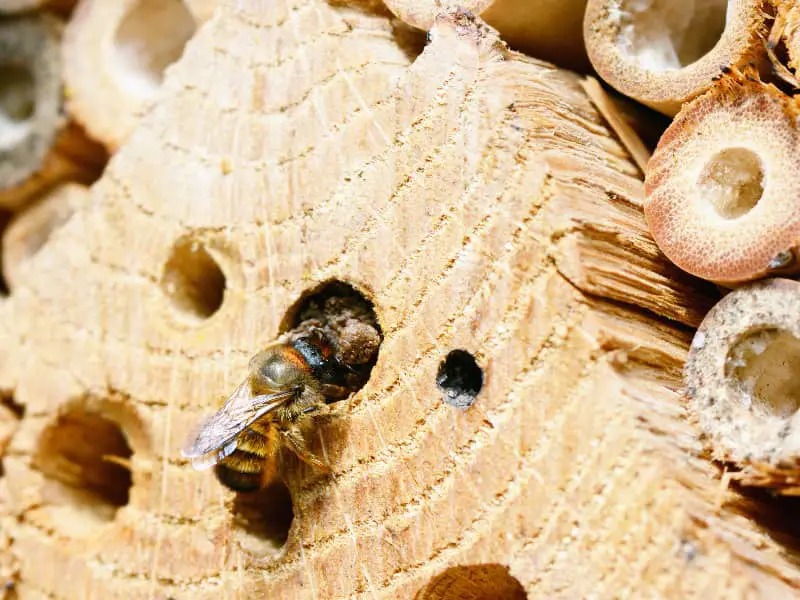
What role does the season play in a bee nest in the roof?
The time of year can have a significant impact on how active bees are in a nest and how they behave. In spring, when flowers begin to bloom, bees become more active and gather nectar and pollen for their growing colony. This is also the time when new queens are born and new nests can be created.
Summer is the peak season for bees. During this time, nests become fuller and there is more bee activity as they stock up on food for the coming winter. This is the time of year you are most likely to notice a nest in your roof.
In autumn, bees prepare for winter. They store food and the colony decreases in size. In colder climates, many bees will die and only the queen and some workers will overwinter.
Bees are least active in winter. In colder regions, they may even go into a kind of hibernation. If you want to remove a nest during this time, this can be the best time, as the risk of bee stings is reduced.
Can other animals be attracted to a bee nest in the roof?
A bee nest can attract other animals. Animals that live in your region may be attracted to the scent of honey. In urban areas, smaller animals such as martens or raccoons may be interested in honey or bee larvae as food.
Birds may also be attracted to a bee nest, as some species use bees as a food source. Woodpeckers, for example, may be tempted to peck into the wax structure of a nest to get at the bee larvae inside.
It is important to be aware that a bee nest in the roof will not only attract bees, but also potentially other animals that could pose a threat to the nest or to your home.
Are there differences between a bee nest and a wasp nest in the roof?
Yes, definitely! Even if Bees and wasps are insects and live in swarms, there are significant differences between their nests and habits. Wasps, especially the species found in our regions, often build their nests from a type of "papier-mâché" that they make from wood fibers mixed with their saliva. These nests have a characteristic gray or brown coloration and a papery texture.
Bees, on the other hand, build their nests from wax. A bee nest, often referred to as a hive, consists of a series of hexagonal cells arranged closely together. This structure allows bees to store honey and care for their brood.
Moreover, wasps tend to be more aggressive than bees, especially when they feel threatened. So if you find that you have a nest in the roof, it is important to determine exactly whether it is bees or wasps before taking action.
Conclusion: bee nest in the roof
In this text we have intensively studied the phenomenon of bees' nests in the roof. We have learned why bees choose these places, how to detect their presence, and what measures can be taken to prevent their settlement or to respond humanely.
It turns out that the coexistence of humans and bees is an exciting and complex matter that requires both respect for these fascinating insects and careful consideration of one's own needs and safety.
Author

-
Garden animal - A life with nature
Welcome to my animal blog! My name is Dirk and I am happy to take you on my journey through the fascinating world of animals and gardening.
Born 54 years ago, I have had an insatiable curiosity for the animal world around me since childhood. Although I have moved professionally in other industries, my true passion has always been animals and nature. It is remarkable how a small garden has become such an important part of my life.
Many of my fondest memories are associated with the animals that share our home. Whether it's the curious squirrels that scurry across the trees in the morning, the colorful variety of birds that visit our feeders, or the busy bees and butterflies that pollinate our flowers, every moment with them is invaluable to me.
This blog is my contribution to share my experiences, discoveries and insights with like-minded people. Here I will share stories of unforgettable encounters with animals, give tips on gardening and creating wildlife-friendly habitats, and take you on my journeys through nature.
Thank you so much for being here!
Cordial,
Dirk aka garden animal
Last posts
- 27. February 2024PetsVeganes Hundefutter – Grün und Gesund?
- 18. January 2024ChickensOregano für Hühner
- November 27, 2023HamsterDiurnal hamsters
- November 24, 2023HamsterHamster hammock

